Come join us now, and enjoy playing your beloved music and browse through great scores of every level and styles!
Can’t find the songbook you’re looking for? Please, email us at: sheetmusiclibrarypdf@gmail.com We’d like to help you!
Table of Contents
William Grant Still: Three Visions (Suite for piano solo)
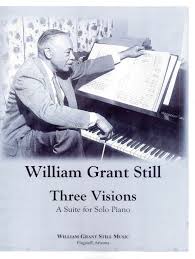
Best Sheet Music download from our Library.
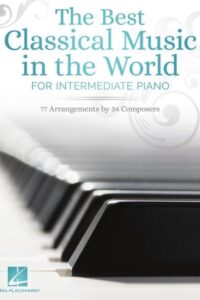
Please, subscribe to our Library.
If you are already a subscriber, please, check our NEW SCORES’ page every month for new sheet music. THANK YOU!
0:00 – Dark Horseman 1:30 – Summerland 6:00 – Radiant pinnacle
Browse in the Library:
Or browse in the categories menus & download the Library Catalog PDF:
William Grant Still
William Grant Still (1895 – 1978) was an American composer, arranger, conductor, and multi-instrumentalist, often called “the Dean of African American composers.” He was the first African American to have a symphony performed by a major orchestra in the United States, the first to conduct a major symphony orchestra, and the first to have an opera produced by a major opera company.

Early Life and Education
- Born on May 11, 1895, in Woodville, Mississippi, and raised in Little Rock, Arkansas.
- His father died when he was an infant, and his mother, a teacher, encouraged his musical interests.
- Studied at Wilberforce University, where he initially pursued medicine but shifted to music.
- Later trained at the Oberlin Conservatory of Music, then studied composition with George Whitefield Chadwick and later with avant-garde composer Edgard Varèse in New York.
Career and Achievements
- Worked as an arranger for popular and jazz bands in New York, including for W. C. Handy and Paul Whiteman.
- Became involved with the Harlem Renaissance, blending African American musical traditions with classical forms.
- His Symphony No. 1 “Afro-American” (1930) was the first symphony by an African American to be performed by a major U.S. orchestra (Rochester Philharmonic, 1931).
- Conducted the Los Angeles Philharmonic at the Hollywood Bowl in 1936, making him the first African American to lead a major orchestra in the U.S.
- His opera Troubled Island (1939, libretto by Langston Hughes and Verna Arvey) was the first by an African American staged by a major company (New York City Opera, 1949).
Musical Style
- Fused classical European traditions with African American idioms: blues, spirituals, jazz, and folk tunes.
- Emphasized lyricism, accessibility, and cultural expression rather than strict modernist abstraction.
- Advocated for a distinctly American classical music rooted in Black cultural traditions.
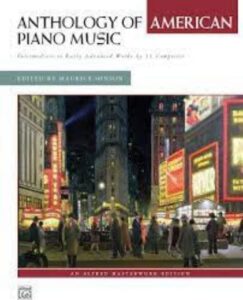
Notable Works
- Symphonies: Afro-American Symphony (No. 1), Song of a New Race (No. 2), The Sunday Symphony (No. 3), Autochthonous Symphony (No. 4), Western Hemisphere Symphony (No. 5).
- Operas: Troubled Island, A Bayou Legend, Highway 1, U.S.A.
- Chamber & Vocal Music: Lyric Quartette, Danzas de Panama, many art songs.
- Also wrote for radio, film, and popular ensembles.
Legacy
- Broke multiple racial barriers in American classical music.
- Opened doors for later generations of African American composers and performers.
- His works are increasingly studied and performed, recognized as cornerstones of 20th-century American music.
- Died in Los Angeles, California, on December 3, 1978.
William Grant Still’s music stands out for celebrating African American heritage within the classical tradition, offering a unique and dignified voice at a time when systemic racism excluded many Black composers from mainstream recognition.
Three Visions (1935) is one of William Grant Still’s most powerful works for solo piano. It is a short suite in three movements, deeply symbolic, written during the Harlem Renaissance period when Still was developing a distinctive African American voice within classical idioms. The suite is often regarded as a spiritual and philosophical statement on the human soul’s journey after death.
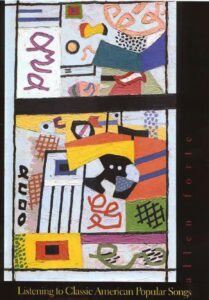
Three Visions (1935) Overview and Musical Analysis
- Title: Three Visions (for solo piano)
- Date: 1935
- Movements:
- Dark Horsemen
- Summerland
- Radiant Pinnacle
- Theme: The cycle represents the progression of the human soul: confrontation with death, passage to spiritual peace, and ultimate ascension.
1. Dark Horsemen
- Character: Turbulent, dissonant, and rhythmically urgent.
- Musical features:
- Rapid ostinati and syncopations drive the texture.
- Dense chords, sharp dynamics, and angular melodies suggest violence and inevitability — the soul’s confrontation with mortality.
- Harmonic language: rooted in tonal centers but heavily chromatic, with influences from early modernism (Still studied with Varèse).
- Strong percussive writing evokes imagery of galloping horses (possibly a reference to the biblical Four Horsemen of the Apocalypse).
Interpretation: This movement symbolizes the struggle and chaos of death, the breaking away of the soul from earthly ties.
2. Summerland
- Character: Gentle, lyrical, and serene — the most frequently performed movement.
- Musical features:
- Lush, hymn-like melody in the middle register, often played with a singing legato.
- Rich Romantic harmonies, influenced by Chopin and Debussy but colored with blues-inflected lines.
- Transparent texture, long sustained chords, and rubato create a meditative atmosphere.
- Tonal stability (often interpreted in D♭ major) provides calmness.
Interpretation: Summerland represents the spiritual paradise the soul reaches after death — peaceful rest and eternal beauty.
This movement is sometimes performed alone as an independent concert piece or even arranged for orchestra.
3. Radiant Pinnacle
- Character: Triumphant, luminous, and ascending.
- Musical features:
- Energetic rhythms, sweeping arpeggios, and brighter harmonies than in the previous movements.
- Builds momentum with a sense of striving upward, often through sequences and rising melodic gestures.
- Tonal clarity, major sonorities, and climactic chords express transcendence.
- Harmonically more consonant than Dark Horsemen, but with modern chromatic coloring.
Interpretation: This final movement depicts the soul’s union with the divine, ascending to its highest state — ultimate illumination.
Stylistic Significance
- Still fuses African American spiritual aesthetics (hymn-like phrasing, blues shadings, and rhythmic vitality) with Romantic piano traditions and 20th-century modernism.
- The three movements form a narrative arc: struggle → peace → transcendence.
- Philosophically, the suite echoes African American religious culture, yet framed in a universal human story of death and renewal.
In short, Three Visions is both a musical poem and a spiritual statement. It demonstrates Still’s ability to merge classical craft with African American cultural expression, creating a deeply humanistic and uplifting work.
Perfect — let’s dive into a harmonic walkthrough of “Summerland” from William Grant Still’s Three Visions. Since this movement is often performed alone and is the most tonal of the suite, it lends itself beautifully to harmonic analysis.
(Note: Exact bar numbers vary depending on the edition, but I’ll give the progression in sections. The piece is most often read in D♭ major.)
“Summerland” — Harmonic Analysis
Opening (mm. 1–4)
- Key: D♭ major
- Chords:
- I (D♭ major) — tonic established gently, hymn-like.
- IV (G♭ major) with added 6th/9th sonorities.
- I again, enriched by suspensions and inner voice motion.
The effect is calm, hymn-like stability. Still avoids strong cadences, instead sustaining a floating atmosphere.
First Phrase (mm. 5–12)
- Melody enters in the middle register, supported by soft chords.
- Progression:
- I → V/vi → vi (B♭ minor) → ii (E♭ minor) → V (A♭ major).
- Resolves back to I (D♭).
This is a classical diatonic motion but with added-color tones (6ths, 9ths), giving a Debussy-like lushness. The move to vi and ii emphasizes a spiritual, tender quality rather than dramatic tension.
Second Phrase (mm. 13–20)
- More chromaticism enters.
- Chords:
- I → ♭VII (C♭ major) → IV (G♭) → ii7 (E♭m7) → V7 (A♭7).
- Resolution: cadences softly back to I.
The use of ♭VII (C♭) is borrowed from folk/blues progressions. It enriches the harmony with a distinctly African American inflection inside an otherwise classical framework.
Climactic Middle Section (mm. 21–32)
- Harmonically more adventurous:
- Alternation between vi (B♭ minor) and IV (G♭ major).
- Sequence through chromatic mediants: I (D♭) → iii (F minor) → V/ii (F7) → ii (E♭ minor).
- Approaches V7 (A♭7) with stronger rhythm and dynamics.
The chromatic mediant shifts (D♭ → Fm → A♭) give the impression of warmth and expansion — the soul ascending in vision.
Return (mm. 33–40)
- Recapitulation of the opening theme.
- Progression largely tonic (I), with embellishments:
- I → IV → ii7 → V7 → I.
- Still decorates the chords with added 9ths and 11ths, keeping the sound lush and modern.
Coda (mm. 41–end)
- Gentle descent, cadencing finally on a pure I (D♭ major).
- Chords sustain with long fermatas, creating timeless stillness.
The coda is essentially a plagal cadence (IV → I), which resonates with the feeling of a hymn or spiritual.
Summary of Harmonic Style in “Summerland”
- Foundation: Firmly tonal, centered in D♭ major.
- Coloration: Use of added 6ths, 9ths, 11ths for lush textures.
- African American inflection:
- Borrowed ♭VII (C♭ major) → I.
- Blues-like coloring of melodic lines (flattened 3rd, 7th inflections).
- Narrative arc: Gentle tonic → chromatic expansion → luminous return.
- Effect: A meditative vision of paradise — serenity, lyricism, timeless rest.
So, harmonically, Summerland balances European Romanticism (Chopin, Debussy) with African American idioms (bluesy modal borrowing, plagal cadences). This is why it feels both “classical” and “soulful.”
| Artist or Composer / Score name | Cover | List of Contents |
|---|---|---|
| TOP TEN X3 (5) Guitar piano |
 |
TOP TEN X3 (5) Guitar piano |
| Top Viral Hits 2020 2022 Piano Vocal Guitar |
 |
Top Viral Hits 2020 2022 Piano Vocal Guitar |
| Toquinho – A Arte Brasilera de – sheet music songbook Guitar Tabs |
 |
Toquinho – A Arte Brasilera de – sheet music sogbook Guitar Tabs |
| Toquinho – Aquarela Guitar with TABs |
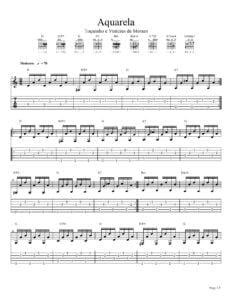 |
|
| Toquinho Songbook (Almir Chediak) Guitar |
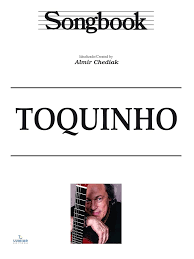 |
Toquinho Songbook (Almir Chediak) Guitar |
| Tori Amos – Silent All These Years | ||
| Tori Amos Anthology Her Life In Music 25 Song Piano Vocal Guitar |
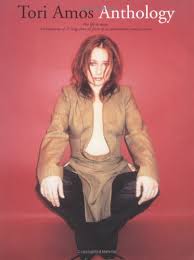 |
Tori Amos Anthology Her Life In Music 25 Song Piano Vocal Guitar |
| Tori Amos Little Earthquakes Piano Vocal Guitar |
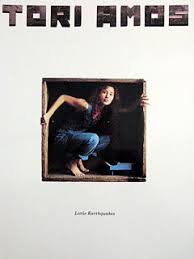 |
Tori Amos Little Earthquakes Piano Vocal Guitar |
| Tori Amos Tales Of A Librarian Piano Vocal Guitar |
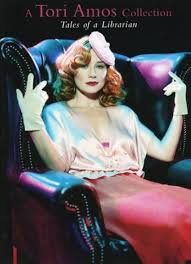 |
Tori Amos Tales Of A Librarian Piano Vocal Guitar |
| Tori Amos The Bee Sides Piano Vocal Guitar |
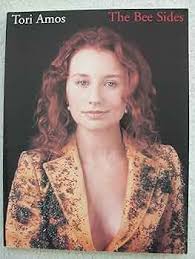 |
Tori Amos The Bee Sides Piano Vocal Guitar |
| Tori Amos The Beekeeper Piano Vocal Guitar |
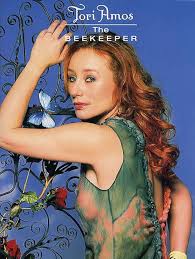 |
Tori Amos The Beekeeper Piano Vocal Guitar |
| Tori Amos Unplugged Piano Vocal Guitar |
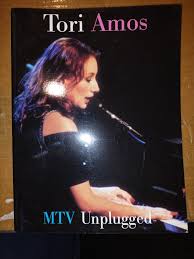 |
Tori Amos Unplugged Piano Vocal Guitar |
| Tori Kelly Paper Hearts Piano |
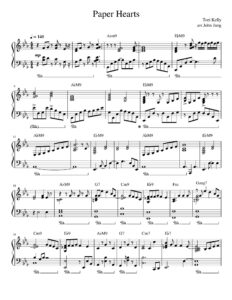 |
|
| Torna A Surriento Traditional Neapolitan Song By Ernesto De Curtis (Easy Piano Solo With Lyrics In English) |
 |
|
| Torna a Surriento.mscz | ||
| Toshi Ichiyanagi In A Living Memory For Flute Solo |
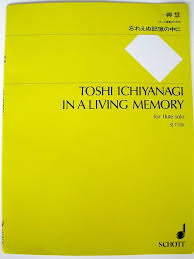 |
|
| Toshifumi Hinata End Title (Tokyo Love Story) |
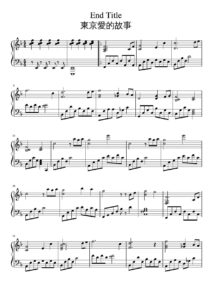 |
|
| Toshihiko Sahashi Fuuki Iinchou Hibari Kyoya | Toshihiko Sahashi Fuuki Iinchou Hibari Kyoya | |
| Toshihiko Sahashi Katekyo Hitman Reborn Hibari Kyoyas Theme | Toshihiko Sahashi Katekyo Hitman Reborn Hibari Kyoyas Theme | |
| Toshihiko Sahashi Tsuna Awakens Ost Katekyo Hitman Reborn |
 Toshihiko Sahashi Tsuna Awakens Ost Katekyo Hitman Reborn
Toshihiko Sahashi Tsuna Awakens Ost Katekyo Hitman Reborn |
|
| Toshio Hosokawa Chant For Violoncello And Orchestra |
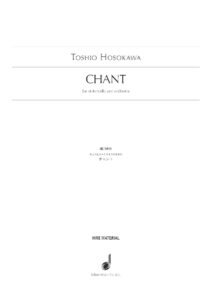 |
|
| Toshio Hosokawa Nacht Klange For Piano Solo SJ 1102 |
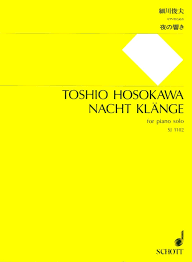 |
|
| Toshio Hosokawa Reminiscence For Marimba SJ 1160 |
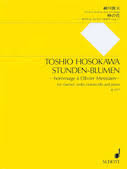 |
|
| Toshio Hosokawa Renka Soprano And Guitar SJ 106 |
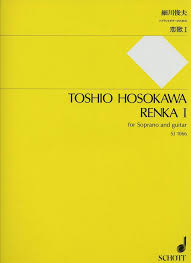 |
|
| Toshio Hosokawa Silent Flowers for String Quartet SJ 1121 |
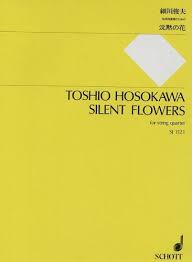 |
|
| Toshio Masuda Naruto – Grief and Sorrow (Hokage’s Funeral) Piano and Violin (Musescore file).mscz | Musescore File | |
| Total Guitar – The ultimate scale book |
 |
|
| Toto Guitar Anthology Authentic Guitar Tab |
 |
Toto Guitar Anthology Authentic |
| Toto – Africa (Easy Piano Solo Arr. Sheet Music) | Toto – Africa (Easy Piano Solo Arr. Sheet Music) | |
| Toto – Africa (Intermediate Piano Solo arr.) | Toto – Africa | |
| Toto – Childs Anthem (Intermediare Piano Solo arr.) | Toto – Childs Anthem (Intermediate Piano Solo arr) | |
| Toto – The Best Of Toto (Guitar, Kbds, Bass, Drum, Vocal) | Toto – The Best Of Toto (Guitar, Kbds, Bass, Drum, Vocal) | |
| Toto Cutugno C’est Venice | Toto Cutugno C’est Venice | |
| Toto Cutugno L’italiano | Toto Cutugno L’italiano | |
| Toto Cutugno Solo Noi | Toto Cutugno Solo Noi | |
| Tournemire op. 33 Po me Mystique | ||
| Tracy Chapman – Complete Songbook |
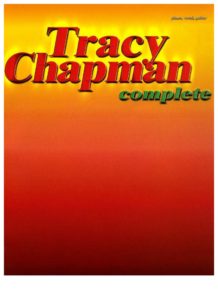 |
Tracy Chapman – Complete Songbook |
| Tracy Chapman – Tracy Chapman music songbook |
 |
Tracy Chapman – Tracy Chapman music songbook |
| Tracy Chapman Fast Car Sheet Music |
 |
|
| Traditional – Swing Low Sweet Charriot | Traditional – Swing Low Sweet Charriot | |
| Traditional Dona Nobis Pacem (Piano Solo Arr.) Give Us Peace Musescore File.mscz | ||
| Traditional English Carol – The First Noel | Traditional English Carol – The First Noel | |
| Traditional English Carol The First Noël (Piano Solo).mscz | ||
| Traditional Spiritual Go Tell It On The Mountain Arr. By Philip Kern |
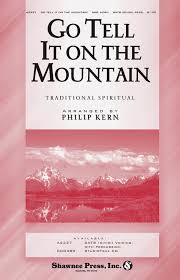 |
|
| Trailer Park The Musical Piano Vocal Score by David Nehls and Betsy Kelso |
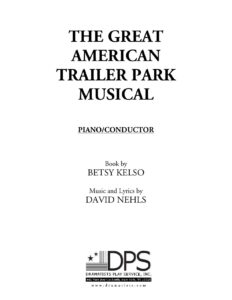 |
|
| Train – Drops Of Jupiter | ||
| Train Piano Sheet Music Collection Piano Vocal Guitar |
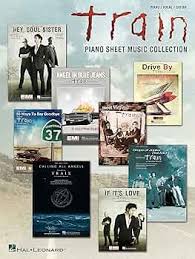 |
Train Piano Sheet Music Collection Piano Vocal Guitar |
| Transparent Theme (Solo Piano) (Musescore File).mscz | ||
| Tratado de Armonia – Arnold Schoenberg (Spanish-Español) | Book Theory | |
| Travelin Soldier – Dixie Chicks | ||
| Trepat , Carles – Homenaje A Baden Powel |
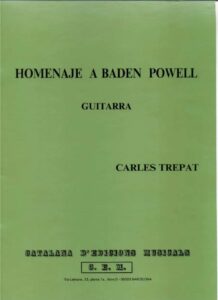 |
|
| Trepat, Carles Nana De Sevilla Partitura (Guitar, Guitarra) |
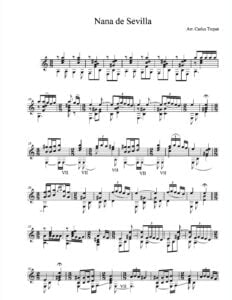 |
|
| Trinity – Pop and Rock Guitar Grade 1 Contemporary & Classic songs with TABs TCL |
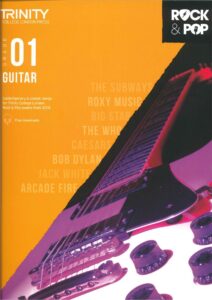 |
Trinity – Pop and Rock Guitar Grade 1 Contemporary & Classic songs |
| Trinity – Pop and Rock Guitar Grade 2 Contemporary & Classic songs with TABs TCL |
 |
Trinity – Pop and Rock Guitar Grade 2 Contemporary & Classic songs |
| Trinity – Pop and Rock Guitar Grade 3 Contemporary & Classic songs with TABs TCL |
 |
Trinity – Pop and Rock Guitar Grade 3 Contemporary & Classic songs |
| Trinity – Pop and Rock Guitar Grade 4 Contemporary & Classic songs with TABs TCL |
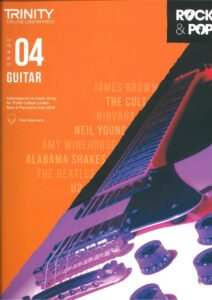 |
Trinity – Pop and Rock Guitar Grade 4 Contemporary & Classic songs |
| Trinity 2010-2015 Guitar Grade 3 Pieces & Exercises TCL |
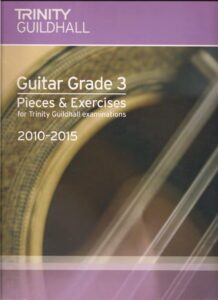 |
|
| Trinity Acoustic Guitar Grade 03 05 Fingerstyle And Plectrum With Mp3 Guitar Exam 2020 2023 TCL |
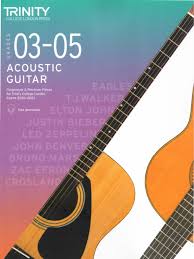 |
Trinity Acoustic Guitar Grade 03 05 Fingerstyle And Plectrum With Mp3 Guitar Exam 2020 2023 |
| Trinity Acoustic Guitar Grade 06 08 Fingerstyle And Plectrum Guitar Exam 2020 2023 TCL |
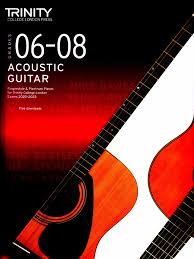 |
Trinity Acoustic Guitar Grade 06 08 Fingerstyle And Plectrum Guitar Exam 2020 2023 |
| Trinity Acoustic Guitar Initial To Grade 02 Fingerstyle And Plectrum Guitar Exam 2020 2023 TCL |
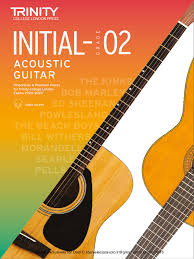 |
Trinity Acoustic Guitar Initial To Grade 02 Fingerstyle And Plectrum Guitar Exam 2020 2023 |
| Trinity Classical Guitar 2010-2015 Grade 07 TCL |
 |
|
| Trinity Classical Guitar 2020-2023 Grade 01 TCL |
 |
|
| Trinity Classical Guitar 2020-2023 Grade 02 TCL |
 |
|
| Trinity Classical Guitar 2020-2023 Grade 03 TCL |
 |
|
| Trinity Classical Guitar 2020-2023 Grade 04 TCL |
 |
|
| Trinity Classical Guitar 2020-2023 Grade 05 TCL |
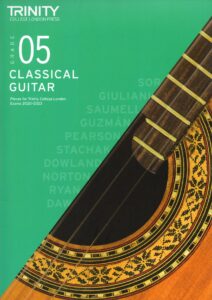 |
|
| Trinity Classical Guitar 2020-2023 Grade 06 TCL |
 |
|
| Trinity Classical Guitar 2020-2023 Grade 08 TCL |
 |
|
| Trinity Classical Guitar 2020-2023 INITIAL TCL |
 |
|
| Trinity Classical Guitar Grade 05 2010-2015 TCL |
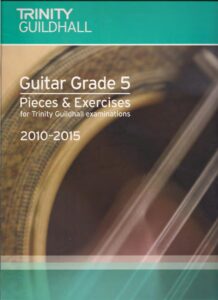 |
|
| Trinity Electronic Keyboard Grade 1 Pieces & Technical work TCL |
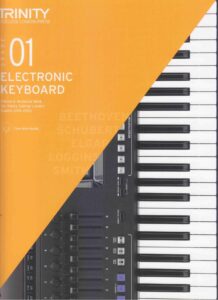 |
Trinity Electronic Keyboard Grade 1 |
| Trinity Electronic Keyboard Grade 2 Pieces & Technical work TCL |
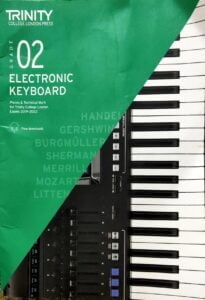 |
Trinity Electronic Keyboard Grade 2 |
| Trinity Electronic Keyboard Grade 6 Pieces & Technical work TCL |
 |
Trinity Electronic Keyboard Grade 6 |
| Trinity Electronic Keyboard Grade 7 Pieces & Technical work TCL |
 |
Trinity Electronic Keyboard Grade 7 |
| Trinity Electronic Keyboard Initial Grade 2019-2022 TCL |
 |
|
| Trinity Electronic Keyboard Initial Pieces and Technical Work 2015-2018 TCL |
 |
|
| Trinity Electronic Keyboard Sample Booklet TCL |
 |
|
| Trinity Guitar 2016 2019 Grade 1 TCL |
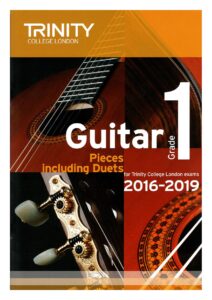 |
|
| Trinity Guitar 2016 2019 Grade 2 TCL |
 |
|
| Trinity Guitar 2016 2019 Grade 3 TCL |
 |
|
| Trinity Guitar 2016 2019 Grade 4 TCL |
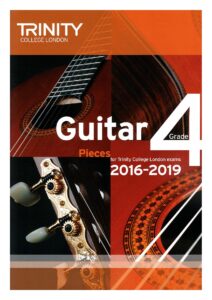 |
|
| Trinity Guitar 2016 2019 Grade 5 TCL |
 |
|
| Trinity Guitar 2016 2019 Grade 6 TCL |
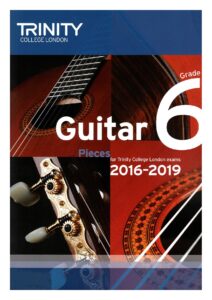 |
|
| Trinity Guitar 2016 2019 Grade 7 TCL |
 |
|
| Trinity Guitar 2016 2019 Grade 8 TCL |
 |
|
| Trinity Guitar 2016 2019 Initial TCL |
 |
|
| Trinity Guitar Initial to Grade 5 Scales Arpeggios and studies TCL |
 |
|
| Trinity Piano Grade 1 Pieces and exercises 2018 2020 TCL |
 |
Trinity Piano Grade 1 Pieces and exercises 2018 2020 |
| Trinity Piano Grade 2 Pieces and exercises 2018 2020 TCL |
 |
|
| Trinity Piano Grade 3 Pieces and exercises 2018 2020 TCL |
 |
|
| Trinity Piano Grade 5 Pieces and exercises TCL |
 |
|
| Trinity Piano Grade 6 (2021-2023) Extended Edition TCL |
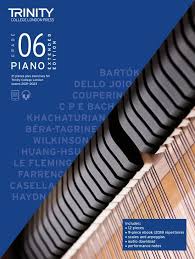 |
Trinity Piano Grade 6 (2021-2023) Extended Edition |
| Trinity Piano Grade 6 Pieces and exercises TCL |
 |
|
| Trinity Piano Grades from Initial to 8 (2023) Extended Editions TCL |
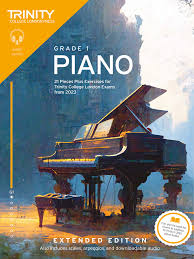 |
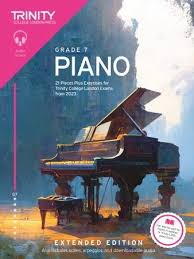 |
| Trinity Piano Initial 2021-2023 Extended Edition TCL |
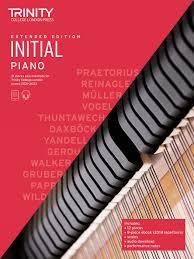 |
Trinity Piano Initial 2021-2023 Extended Edition |
| Trinity Piano Initial Piano 2018-2020 TCL |
 |
Trinity Piano Initial Piano 2018-2020 |
| Trinity Piano Pieces And Exercises Grade 1 2015 2017 TCL |
 |
Trinity Piano Pieces And Exercises Grade 1 2015 2017 |
| Trinity Piano Pieces And Exercises Grade 2 2015 2017 TCL |
 |
Trinity Piano Pieces And Exercises Grade 2 2015 2017 |
| Trinity Piano Pieces Grade 1 2021-2023 TCL |
 |
Trinity Piano Pieces Grade 1 2021-2023 |
| Trinity Piano Pieces Grade 2 12 Piano Pieces 2021-2023 TCL |
 |
Trinity Piano Pieces Grade 2 12 Piano Pieces 2021-2023 |
| Trinity Rock and Pop Guitar Grade 8 (Contemporary and classic songs) with Tablature TCL |
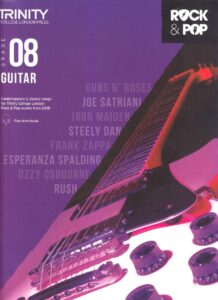 |
Trinity Rock and Pop Guitar Grade 8 (Contemporary and classic songs) |
| Trinity Sight Reading Book 1 Sound at sight Piano TCL |
 |
|
| Trinity Theory Of Music Workbook Grade 1 TCL |
 |
Trinity Theory Of Music Workbook Grade 1 |
| Trivium Guitar Tab Anthology |
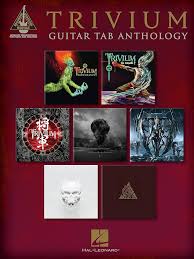 |
Trivium Guitar Tab Anthology |
| True Silent Hill-2- Akira-Yamaoka |
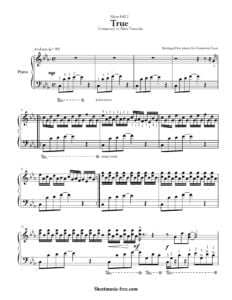 |
|
| Truman Show, The Reunion Philip Glass |
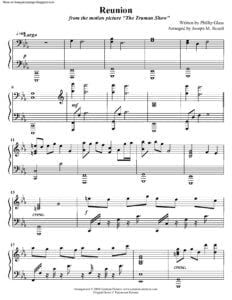 |
|
| Trumpet Classical Pieces Pieces Classiques Trompette 1 Klassische Stücke (Trumpet In C Or Bb) |
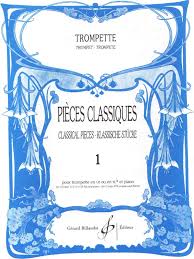 |
Trumpet Classical Pieces Pieces Classiques Trompette 1 Klassische Stücke (Trumpet In C Or Bb) |
| Trumpet Classical Pieces Pieces Classiques Trompette 2 Klassische Stücke (Trumpet In C Or Bb) |
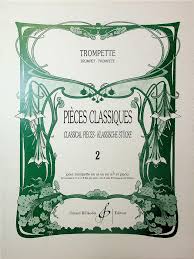 |
Trumpet Classical Pieces Pieces Classiques Trompette 2 Klassische Stücke (Trumpet In C Or Bb) |
| Trumpet Method Allen Vizzutti Trumpet Method Book 1 2 3 Complete |
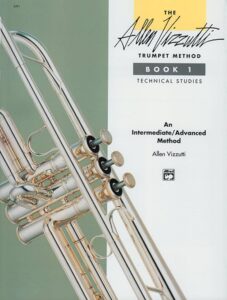 |
|
| Trumpet Method Anthony Plog Method For Trumpet Complete 7 books |
 |
|
| Trumpet Omnibook For Bb B Flat Instruments Transcribed Exactly From Artist Recorded Solos |
 |
Trumpet Omnibook For B Flat Instruments Transcribed Exactly From Artist Recorded Solos |
| Trumpet Plus Vol 1 By Arturo Himmer Trumpet Standards |
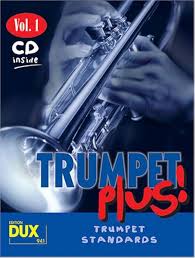 |
Trumpet Plus Vol 1 By Arturo Himmer Trumpet Standards |
| Trumpet Plus Vol 3 By Arturo Himmer Jazz & Swing |
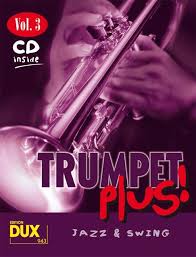 |
Trumpet Plus Vol 3 By Arturo Himmer Jazz & Swing |
| Trumpet Solos, Easy (The Canadian Brass) |
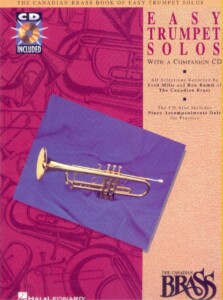 |
|
| Trumpet, The (John Wallace, Alexander McGrattan) Yale Musical Instruments Series (Book) |
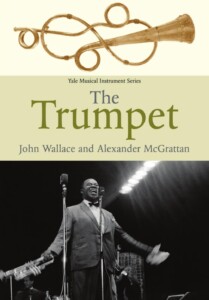 |
|
| Tsim Sha Tsui Stroll (Lust, Caution OST) Alexandre Desplat | ||
| Tu vuo’ fa’ l’Americano (Renato Carosone) | ||
| Tubular Bells (Mike Oldfield) |
 |
|
| Tubular Bells Intro – Mike Oldfield (Musescore File).mscz | ||
| Tuck Andress Europa by Carlos Santana guitar TABs |
 |
|
| Tuck Everlasting (The Musical) Music By Chris Miller Lyrics By Nathan Tysen (Piano Vocal Selections) |
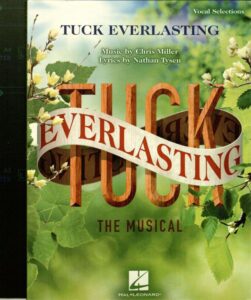 |
Tuck Everlasting (The Musical) Music By Chris Miller Lyrics By Nathan Tysen (Piano Vocal Selections) |
| Tunes For Ten Fingers A First Piano Book By Pauline Hall (Oxford) |
 |
|
| TV and Movie Themes (Piano, Vocal, Guitar) |
 |
TV and Movie Themes (Piano, Vocal, Guitar) |
| TV Detective Themes For Solo Piano |
 |
TV Detective Themes For Solo Piano |
| TV Fake Book, The |
 |
TV Fake Book, The |
| TV Songs Big Book Of TV Theme Songs 2nd Edition Piano Vocal Guitar |
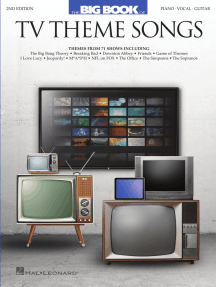 |
TV Songs Big Book Of TV Theme Songs 2nd Edition Piano Vocal Guitar Contents |
| Twelve Etudes Op 8 No 12 Scriabin (Musescore File).mscz | ||
| Twenty One Pilots – Goner |
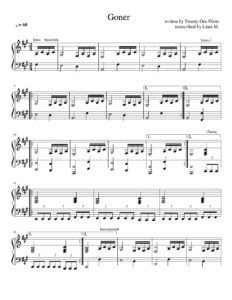 |
|
| Twenty One Pilots – Heathens – Piano |
 |
|
| Twenty One Pilots – Heathens (arr. for guitar TABs) | Twenty One Pilots – Heathens (arr. for guitar TABs) | |
| Twenty One Pilots – Heathens (Piano vocal) | Twenty One Pilots – Heathens (Piano vocal) | |
| Twenty One Pilots – Stressed Out Sheet Music | Twenty One Pilots – Stressed Out Sheet Music | |
| Twenty One Pilots – Vessel (Medley) | Twenty One Pilots – Vessel (Medley) | |
| Twenty One Pilots Kitchen Sink (piano solo) | Twenty One Pilots Kitchen Sink (piano solo) | |
| Twenty-Four Italian Songs And Arias Medium High |
 |
Twenty-Four Italian Songs And Arias, Medium High |
| Twice – Knock Knock Piano Solo |
 |
|
| Twilight – The Score – Carter Burwell |
 |
Twilight – The Score – CArter Burwell |
| Twilight Breaking Dawn Part 1 Music From The Motion Picture Score By Carter Burwell Piano Solo |
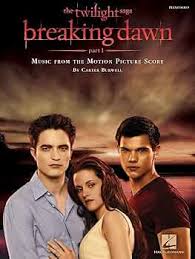 |
Twilight Breaking Dawn Part 1 Music From The Motion Picture Score By Carter Burwell Piano Solo |
| Twilight Breaking Dawn Part 1 Music From The Motion Picture Score By Carter Burwell Piano Vocal Guitar |
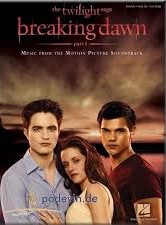 |
Twilight Breaking Dawn Part 1 Music From The Motion Picture Score By Carter Burwell Piano Vocal Guitar |
| Twilight saga – New Moon Music Score for Piano Solo Alexandre Desplat |
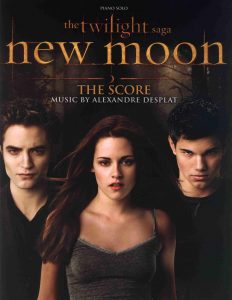 |
Twilight.New.Moon.Music.Score.for.Piano.Solo).Alexandre.Desplat |
| Twilight Saga Eclipse Music From The Motion Picture Soundtrack Piano Vocal Guitar |
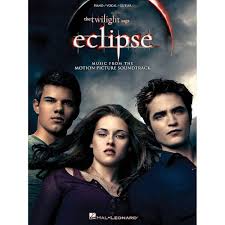 |
Twilight Saga Eclipse Music From The Motion Picture Soundtrack Piano Vocal Guitar |
| Twin Peaks – Audreys Dance Angelo Badalamenti | ||
| Twin Peaks – Laura Palmers Theme Angelo Badalamenti | ||
| Twin Peaks – Twin Peaks Theme Angelo Badalamenti | ||
| Twinkle Twinkle Little Star Variations Suzuki Guitar Vol. 1 (Musescore File).mscz | ||
| Two Socks theme (Dances with Wolves OST) John Barry | ||
| Two Steps From Hell Blackheart Piano Sheet Music by Thomas Bergersen |
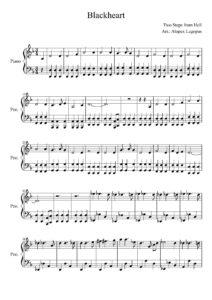 |
|
| Two Steps From Hell Flight Of The Silverbird (Piano Solo) Thomas Bergersen |
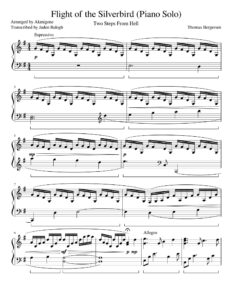 |
|
| Two Steps from Hell Invincible Sheet Music |
 |
|
| Two Steps from Hell Protectors Of The Earth Nick Phoenix & Thomas J. Bergersen | Two Steps from Hell Protectors Of The Earth Nick Phoenix & Thomas J. Bergersen |

